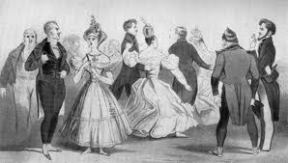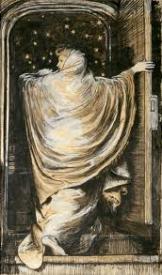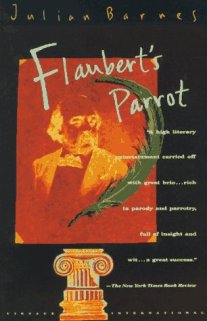 “The Moonstone” is a novel that after it is read, still seems impossible to write. First, there is the simple anomaly that “The Moonstone,” a detective fiction, not only resists the temptation to be read once and shelved after the mystery has been solved, but practically demands an immediate second reading and, even then, periodic revisits.
“The Moonstone” is a novel that after it is read, still seems impossible to write. First, there is the simple anomaly that “The Moonstone,” a detective fiction, not only resists the temptation to be read once and shelved after the mystery has been solved, but practically demands an immediate second reading and, even then, periodic revisits.
There is the wonder of the Moonstone itself, a religious Indian gem with a purported history, which introduces the novel as an adventure mystery of Indiana Jones proportions, only to become lost within the first hundred pages to provoke not a reclamation mission of an epic scale, but a series of ill-fated relationships and romances. There is the marriage between sensationalism, popular science, and an esoteric curse, all functioning in curious harmony with one another. There is Collins executing a bevy of acrobatic tightrope walks: approving opium for the conciliatory benefits while condemning it for its addictiveness; vindicating rational English conduct while nuancing its cruelty to its colonies (India).
Perhaps more importantly of all though, “The Moonstone” is a wonder for the fact that, as Anthony Burgess echoes the feelings of many scholars somewhere in his “99 Novels”, it proves that genre writing can still have literary merit. Since scholars have beaten me to the punch on theme and literary resonance, it’s to “The Moonstone’s composition that I’ll focus my attention.
The plot, if we really need to focus on it, is straightforward, though by no means simple. Following a turbulent and bloody history, the revered and mysterious moonstone comes into the possession of the commanding officer General Baird when, during the 1799 English assault of Seringapatam in India, he kills the Brahma guarding the stone and appropriates both the stone and a fatal curse for himself. Years go by and the General dies, but not before, in a vindictive act against his family and to the Indiana Brahmans who have attempted to recover the stone, he bequeaths the fated diamond to his niece Rachel.
We enter the scene in the mid 19th century on the eve of Rachel’s eighteenth birthday. Mr Franklin Blake, a young suitor of repute and vigor, is to present the fabulous stone, now estimated at approximately £20,000, to the young lady as a birthday present. This is done and the next day the delighted birthday girl sports the jewel in her bodice, to little joy from her birthday companions who are curiously melancholy and out of sorts. The next day an alarm is risen: the moonstone is lost and foul play is suspected. Fingers point to a local band of ‘jugglers’ (Indians), but they are absolved on lack of evidence. Rachel is devastated and lashes out at Mr Blake as the latter attempts to console her. Authorities are brought in, and summarily brought out. Theories as to the stone’s whereabouts are bandied about, servants are insulted, Rachel is suspected and feelings are hurt, all to the tune of no avail. Clues point to clues point to clues point to no thing. “Whatever else happens,” Gustave Flaubert might have surmised, “we will remain stupid.”
This summary does little justice to the intricate mechanisms of the moonstone’s disappearance and a little more explanation is useful to see just how admirable Collins’ powers as a crime writer are. As in “The Woman In White” Collins uses the technique of multiple narrators to add a subjective flavor to an otherwise objective mystery. For our first voice there is the bemused butler Gabriel Betteredge, the most reasonable, likeable, and intelligent narrator of the bunch. When the household, following the disappearance of the moonstone, call in the private detective Sergeant Cuff from the still-new Scotland Yard, the reader cannot help but feel that Betteredge, had he twenty years younger, would have been the man for the job.
But Betteredge ends up serving the reader as a better servant-master than detective (though, despite his best intentions, he ends up doing both). Collins has a knack for distinctive voices that rivals his poise of plot construction, and he recognizes Betteredge’s introductory whimsy as a valuable asset to counterpoint the much more serous actions that occur later. Sergeant Cuff’s own rendition of this following scene in which he questions the servants would have been much graver and lengthier; Betteredge provides it as an amusing theme with variations:
“I sent them in, one by one, as desired. The cook was the first to enter the Court of Justice, otherwise my room. She remained but a short time. Report, on coming out: ‘Sergeant Cuff is depressed in his spirits; but Sergeant Cuff is a perfect gentleman.’ My lady’s own maid followed. Remained much longer. Report, on coming out: ‘If Sergeant Cuff doesn’t believe a respectable woman, he might keep his opinion to himself, at any rate!’ Penelope went next. Remained only a moment or two. Report, on coming out: ‘Sergeant Cuff is much to be pitied. He must have been crossed in love, father, when he was a young man.’ The first housemaid followed Penelope. Remained, like my lady’s maid, a long time. Report, on coming out: ‘I didn’t enter her ladyship’s service, Mr Betteredge, to be doubted to my face by a low police-officer!’ ”
Miss Clack, the second narrator, deserves little direct attention but much praise. Her narrative, audaciously headed “The Discovery of the Truth”, is an outrageous parody of holier-than-thou Christians with too much indignant righteousness and not enough common sense to keep it to themselves. There’s no diamond in this section, nor is there a Rachel, Sergeant Cuff, or Mr Franklin. How does it fit? The answer is through Collins’ brilliant engineering. Betteredge’s narrative, which produced possible culprits and an article of evidence, concludes with a horrendous suicidal drowning which devastation can be felt in the shocked silence of the narrative’s lead players. There would have been shocked readers as well and Collins, a brilliant serializing novelist by this point in his career, would be all too aware that his readers needed a break from the sturm und drang of the suicide and its terrible Gothicism:
“The tide was on the turn, and the horrid sand began to shiver. The broad brown face of it heaved slowly, and then dimpled and quivered all over. ‘Do you know what it looks like to me?’ says Rosanna…’It looks as if it had hundreds of suffocating people under it—all struggling to get to the surface, and all sinking lower and lower in the dreadful deeps!’ ”
But Collins is never wasteful of his characters and he never engineers one with a singular purpose. Miss Clack operates under hilarious and overblown Christian goodness while she sheds light on the character of Godfrey Ablewhite (a sycophantic surname if ever there was one), Rachel’s more prominent suitor and a man who possess dangerous talents over women:
“He led me to a chair. I haven an indistinct remembrance that he was very affectionate. I don’t think he put his arm round my waist to support me—but I am not sure. I was quite helpless, and his ways with ladies were very endearing. At any rate, we sat down. I can answer for that, if I can answer for nothing more.”
As readers, we know what we’re meant to take away from this information but once we have what we want, we don’t know how to apply it. Such is another of Collins’ talents: the ability to give readers every puzzle piece without the glue to hold them together. And who can doubt Ablewhite’s guilt, after reading Miss Clack’s hazy encounter and Betteredge’s glowing report that the man was,“…a barrister by profession; a ladies’ man by temperament; and a good Samaritan by choice”? Does Betteredge not know the first rule of detection: always suspect most whom you suspect the least?
The joy of reading Sherlock Holmes, the undisputed superstar of detective fiction, is the joy of arriving at success through rationality: it is the joy of applying an equation to a difficult math problem and watching the work yield its solution. However, it is Watson and not Holmes who ranks as Conan-Doyle’s more brilliant creation; Watson, who invites the reader not only to tag along with the crime-solvers but also to indulge in the success when the pieces finally fit together. Watson clings to Holmes because he is both parts fascinated by his friend and concerned about his well being; Holmes allows Watson to cling because he knows what’s good for him; we cling to Holmes by proxy of Watson, but the detective has no stakes in the reader. He wouldn’t spare a moment looking for us if we got lost. No Watson for the reader, and there might as well be no Holmes.
But we cannot read “The Moonstone” the same way that we read Sherlock Holmes. Where Conan-Doyle is detective intricacy at its most ingenious, Collins is intricacy outweighed by humanity. No one who reads Sherlock Holmes is ever seriously invested in the detective. It’s the case and Holmes’s talents that draw out attention, and the characterization of Watson that holds it. Take out the first and you have no story; the second, and you have untranslatable data.
When it comes down to it, it is emotion that drives both the crime and the apprehension of the criminal for Collins. Sir Percival Glyde in “The Woman in White” is driven by equal parts guilt and fear and, and though we know what crime he is guilty of, we cannot apprehend him until we know his ‘secret’, which reveals the nature of his character. Likewise, we can guess the guilty parties in “The Moonstone” but we cannot apprehend them without knowing the natures of the parties involved. Why would the housemaid commit suicide when our hunch is telling us that Ablewhite is guilty? Why would suspicion fall on Rachel that she had something to do with the disappearance when we know, as empathetic readers, that her character is clean?
These are the questions that keep us going and that keep the story moving along even when neither moonstone nor clue to its whereabouts can be seen. “The Moonstone” may be “the first and greatest of English detective novels” as T.S. Eliot calls it, but ‘detective novel’ doesn’t seem to do it justice. “The Moonstone” is more than a story about a crime and detectives; it is about the nature of crime itself and where to divide the line when a criminal and the perpetrator of a criminal act are not one in the same. Collins’ talents as a writer are many, though this ability to give a criminal act, objective in the face of the law, a subjective voice in the face of the people is his greatest.











 Perhaps some of you who frequent our previews section will recall a
Perhaps some of you who frequent our previews section will recall a 






